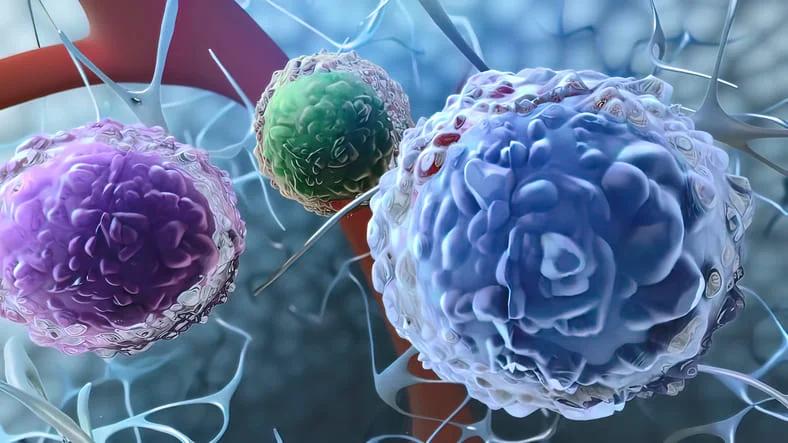KEY TAKEAWAYS
- The study aimed to develop an automated method for quantifying c-MYC and BCL2 positivity in whole-slide images of DLBCL tissue sections.
- Researchers noticed that positive stain proportions were effectively predicted via attention-based learning, with models generalizing to whole slides, offering reliable survival stratification.
The proto-oncogene c-MYC and BCL2 positivity serve as crucial prognostic markers in diffuse large B-cell lymphoma (DLBCL). Yet, manual quantification methods suffer from notable intra- and inter-observer variability.
Thomas E. Tavolara and the team aimed to assess the efficacy of their developed automated quantification approach for whole-slide images, overcoming the challenges posed by evaluating large tissue areas with potentially heterogeneous staining. Leveraging annotations from smaller, more homogeneously stained tissue microarray cores, they trained their method and successfully translated it to whole-slide images.
Researchers performed an inclusive analysis, applying attention-based multiple instance learning to regress the proportion of c-MYC-positive and BCL2-positive tumor cells from pathologist-scored tissue microarray cores. This technique, not relying on individual cell nucleus annotations, was instead trained on core-level annotations of percent tumor positivity.
The model was then translated to scoring whole-slide images by tessellating the slide into smaller core-sized tissue regions and calculating an aggregate score. The method was trained on a public tissue microarray dataset from Stanford and applied to whole-slide images from a geographically diverse multi-center cohort produced by the Lymphoma Epidemiology of Outcomes study.
In tissue microarrays, the automated method demonstrated Pearson correlations of 0.843 and 0.919 with pathologist scores for c-MYC and BCL2, respectively. Using standard clinical thresholds, the method achieved sensitivity/specificity of 0.743/0.963 for c-MYC and 0.938/0.951 for BCL2.
For double-expression, sensitivity and specificity were 0.720 and 0.974. When applied to the external whole-slide image dataset scored by two pathologists, the method yielded Pearson correlations of 0.753 and 0.883 for c-MYC, and 0.749 and 0.765 for BCL2.
Sensitivity/specificity values were 0.857/0.991 and 0.706/0.930 for c-MYC, 0.856/0.719 and 0.855/0.690 for BCL2, and 0.890/1.00 and 0.598/0.952 for double-expressors. Survival analysis indicated that model-predicted TMA scores significantly stratify double-expressors and non-double-expressors for progression-free survival (PFS) (P = 0.0345), contrasting with pathologist scores (P = 0.128).
The study concluded that positive stain proportions can be regressed using attention-based multiple instance learning, demonstrating robust generalization to whole slide images. Additionally, the models provide non-inferior stratification of PFS outcomes.
The project described was supported by the National Heart Lung and Blood Institute and National Center for Advancing Translational Sciences.
The content is solely the responsibility of the authors and does not necessarily represent the official views of the National Cancer Institute, National Heart Lung and Blood Institute, National Center for Advancing Translational Sciences, or the National Institutes of Health.
Source: https://pubmed.ncbi.nlm.nih.gov/38243330/
Tavolara TE, Niazi MKK, Feldman AL, et al.(2024). “Translating prognostic quantification of c-MYC and BCL2 from tissue microarrays to whole slide images in diffuse large B-cell lymphoma using deep learning.” Diagn Pathol. 2024 Jan 19;19(1):17. doi: 10.1186/s13000-023-01425-6. PMID: 38243330; PMCID: PMC10797911.



